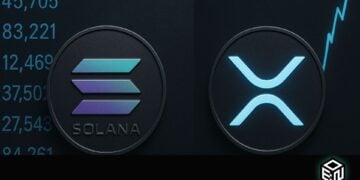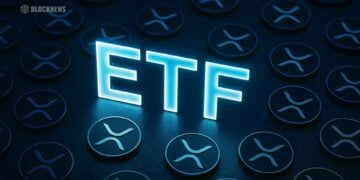- A dormant Ethereum wallet, idle for eight years, suddenly woke up to move a jaw-dropping $116 million in Ether to the Kraken crypto exchange.
- The Ether was originally purchased in June 2014 during a special selling event, where the early contributors amassed pre-mined tokens.
- During the recent Ethereum Community Conference, Vitalik Buterin, the co-founder of Ethereum, spoke about the challenges developers face in introducing new features on the blockchain.
An Ethereum wallet, slumbering for a full eight-year stretch, jolted to life and shifted its mountain of Ether – a staggering 61,216 units, equivalent to $116 million – into the secure vaults of the Kraken cryptocurrency exchange.
Cast your minds back to the summer of 2014, when a particular selling event set the stage for the initial set of Ethereum enthusiasts and inventors to gather their Ether stash, which was then pre-mined. At the time, the Ethereum network was not yet mature enough to create tokens on its own. The price of each unit of Ether ranged from $300 to $400, putting the initial value of the wallet at approximately $20 million. This stash, having lain undisturbed for nearly a decade, has now ballooned to over $116 million.
Data verified by Etherscan indicates that this hefty Ether transfer took place on July 18. The cost of moving this multi-million dollar cache was a mere $1.5, plus a gas price of 25.475673161 Gwei. The identity of the wallet’s owner remains a mystery, illustrating the potential advantage of “hodling” – the practice of holding onto cryptocurrency for the long term.
The very same day, at the Ethereum Community Conference in Paris, Vitalik Buterin, one of the creators of Ethereum, shared his thoughts on some of the obstacles encountered when trying to add new features to the blockchain. He discussed the concept of “paymasters,” or account abstraction extensions, which would allow users to pay their transaction fees with the very cryptocurrency they’re transferring.
Buterin also shed light on the challenges developers have to tackle, such as the need for an Ethereum Improvement Proposal (EIP) to update existing user accounts to smart contracts, and the need to keep the protocol consistent within layer-2 solutions. While the potential benefits of account abstraction are enticing for users, the road ahead is fraught with difficulties.
Sleeping Crypto Giants Awaken in 2023
In 2023, the cryptocurrency world is witnessing a peculiar trend – the reactivation of dormant wallets. Both Ethereum and Bitcoin wallets that had been idle for years are suddenly on the move, shifting large quantities of tokens to exchanges. This resurgence appears to coincide with an optimistic market sentiment, as the value of these digital currencies has seen exponential growth since their initial acquisition, reinforcing the notion of ‘hodling’ or holding onto assets long-term.
Simultaneously, developments in the cryptocurrency ecosystem might be spurring these movements. Cryptocurrency holders might be exploring new opportunities presented by the evolving landscape, such as staking, diversification, or DeFi applications. Despite large transactions, the mystery around the owners’ identities remains, underlining the crypto world’s characteristic anonymity and transactional ease. This recent activity presents an intriguing mix of favorable market conditions and technological growth reviving these sleeping crypto giants.














